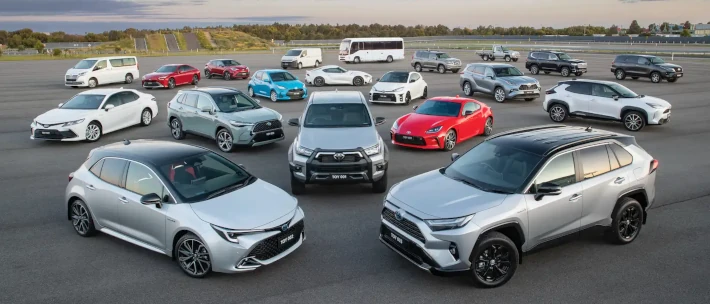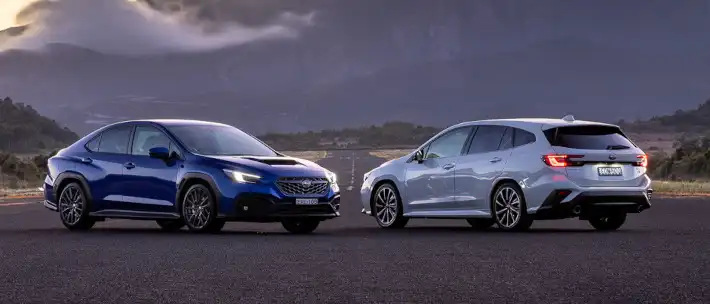Thankfully, with petrol and diesel engines becoming more efficient than ever before to meet emissions standards and a new wave of hybrids arriving on our shores, there’s no shortage of fuel-efficient utes, sedans, SUVs, hatchbacks and wagons in 2024.
Join us as we take a look at ten of the most fuel-efficient petrol, diesel and hybrid cars currently on sale here in Australia.
10 Most Fuel-Efficient Petrol Cars
Let’s kick off our look at the most frugal cars on sale in Australia with a glance at the most fuel-efficient petrol models, a list you’ll notice is dominated by pint-sized small cars whose lightweight stature offers great fuel economy figures.
-
Suzuki Swift - 4.6L/100km
-
Suzuki Ignis - 4.7L/100km
-
Toyota Yaris - 4.9L/100km
-
Audi A3 - 4.9L/100km
-
Fiat 500 - 4.9L/100km
-
Skoda Fabia - 4.9L/100km
-
Mazda 2 - 5.0L/100km
-
Volkswagen Polo - 5.0L/100km
-
Ford Puma - 5.3L/100km
-
Peugeot 308 - 5.3L/100km
Get in touch with one of our Car Buying Specialists today.
Request a quote10 Most Fuel-Efficient Diesel Cars
Moving onto the ever-trusty turbo-diesel powertrain that has proven a hit with working Aussies, below you’ll find ten of the most fuel-efficient diesel vehicles on sale in 2024.
-
Audi Q5 - 4.8L/100km
-
Audi A4 - 4.9L/100km
-
Mazda CX-60 - 4.9L/100km
-
Volkswagen Caddy - 4.9L/100km
-
BMW X3 - 5.9L/100km
-
Kia Sorento - 6.0L/100km
-
Hyundai Santa Fe - 6.1L/100km
-
Hyundai Tucson - 6.3L/100km
-
Kia Sportage - 6.3L/100km
-
Mazda BT-50 - 6.9L/100km
10 Most Fuel-Efficient Hybrid Cars
Now that we’ve covered the most fuel-efficient, non-hybrid assisted vehicles on sale, let’s focus on vehicles with an electric motor to help take the stress off the internal combustion engine and provide some smooth, electric-assisted acceleration off the line.
-
Toyota Yaris Hybrid - 3.3L/100km
-
Lexus LBX - 3.8L/100km
-
Toyota Yaris Cross Hybrid - 3.8L/100km
-
Hyundai Kona Hybrid - 3.9L/100km
-
Hyundai i30 Sedan Hybrid - 3.9L/100km
-
Toyota Corolla Hybrid - 3.9L/100km
-
Toyota Corolla Cross - 4.0L/100km
-
Kia Niro - 4.0L/100km
-
Honda Civic E:HEV - 4.2L/100km
-
Toyota Camry - 4.2L/100km
-
Honda Accord VTi-LX Hybrid - 4.3L/100km
FAQ: How is Fuel Economy Measured in Australia?
Fuel economy figures for any given car are tested under controlled conditions specified by Australian Design Rules (ADR) 81/02 for the Fuel Consumption Labelling for Light Vehicles.
In these tests, the fuel consumption of a vehicle is tested in two different driving scenarios, both the ‘urban’ cycle, which relates to stop-start traffic around town, as well as ‘extra-urban’ cycles that replicate highway driving.
The urban (town driving) and extra-urban (highway driving) cycles are averaged out into what’s known as a ‘combined cycle’ fuel economy figure.
This is measured in litres per 100 kilometres, abbreviated into L/100km.
This is a standard designed to give a representative figure of how much fuel that vehicle’s engine will consume on a mix of town and highway driving.
Request a Quote
If you’re looking to upgrade to a new car, be sure to reach out to one of our car-buying experts who can help find you the best possible price.
Get in touch with one of our Car Buying Specialists today.
Request a quote








